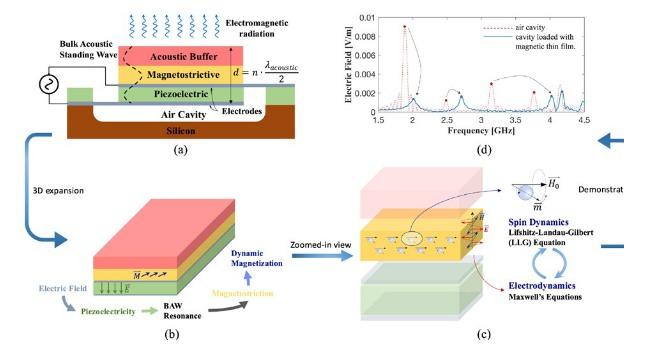TANMS

(a) Cross-section schematic of a BAW-type multiferroic antenna. Voltage excitation at the electrodes generates a stress in the bottom piezoelectric layer that passes into the middle magnetostrictive layer. The piezomagnetic effect generates a dynamic magnetic flux density, which then forms an aperture field and outgoing EM waves. The top acoustic buffer layer ensures that the peak of the stress resides in the magnetostrictive layer. BAW resonance is exploited here to create the dynamic strain and to couple to the radiating element. The structure can also be expanded into a multilayer vertically and to larger planar dimensions for more efficient radiation and easier impedance matching. (b) Expansion of the one-dimensional antenna model to three dimensions. (c) Multi-physics, such as spin dynamics (in the magnetic layer) and electrodynamics (due to the EM radiation), are interacting with each other and they must be correctly modeled. (d) Resonant frequencies of a cavity loaded with an example ferrite thin-film modeled using the following input parameters: in-plane H0=255 Oe, 4πMS=1750 Gauss, and ∆H=50 Oe.

